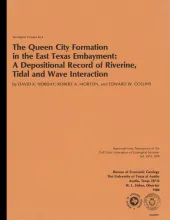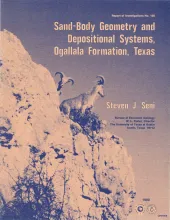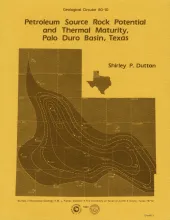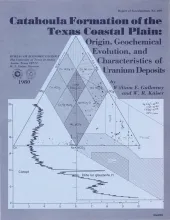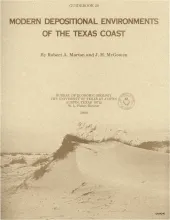Five distinct facies are recognized in the Eocene Queen City exposures between the Trinity River valley and the Louisiana state boundary. These facies (fluvial, deltaic, tidal flat, barrier, and tidal delta) display diagnostic suites of physical and biogenic structures. Sandstones within these facies exhibit substantial differences in paleocurrent pattern.
The Neogene Ogallala Formation is an alluvial apron that occurs east of the Rocky Mountains from South Dakota to the Southern High Plains of Texas. The Ogallala was deposited by coalescent, low-gradient, wet alluvial fans that headed in mountains to the west. Geometry and depositional facies of the Ogallala Formation in Texas north of the 33rd parallel have been determined from outcrop studies and drillers' log descriptions.
Samples collected from 20 geographically widespread wells in the sparsely drilled Palo Duro Basin were analyzed for total organic carbon content (TOC). Highest values of TOC, up to 6.9 percent, occur in Upper Permian San Andres dolomite in the southern part of the basin. Pennsylvanian and Lower Permian (Wolfcampian) basinal shales contain up to 2.4 percent TOC and are fair to very good source rocks. Kerogen color and vitrinite reflectance, which indicate maximum paleotemperatures, were analyzed in all samples containing greater than 0.5 percent TOC.
The Catahoula Formation is composed of ancient fluvial sediments that controlled a wide range of water/sediment interactions responsible for uranium mobilization, transportation, and concentration.
The Texas Coastal Plain is ideal for studying physical processes and the late Quaternary sedimentological record. Together, the diversity of depositional environments, the moderate climate, and the accessibility to most areas provide unique opportunities for (1) conducting geological investigations of modern sediments and the hydrodynamics responsible for their formation and (2) developing models suitable for interpreting ancient sediments. Within a span of about 350 mi (564 km), a broad spectrum of depositional systems is found.


